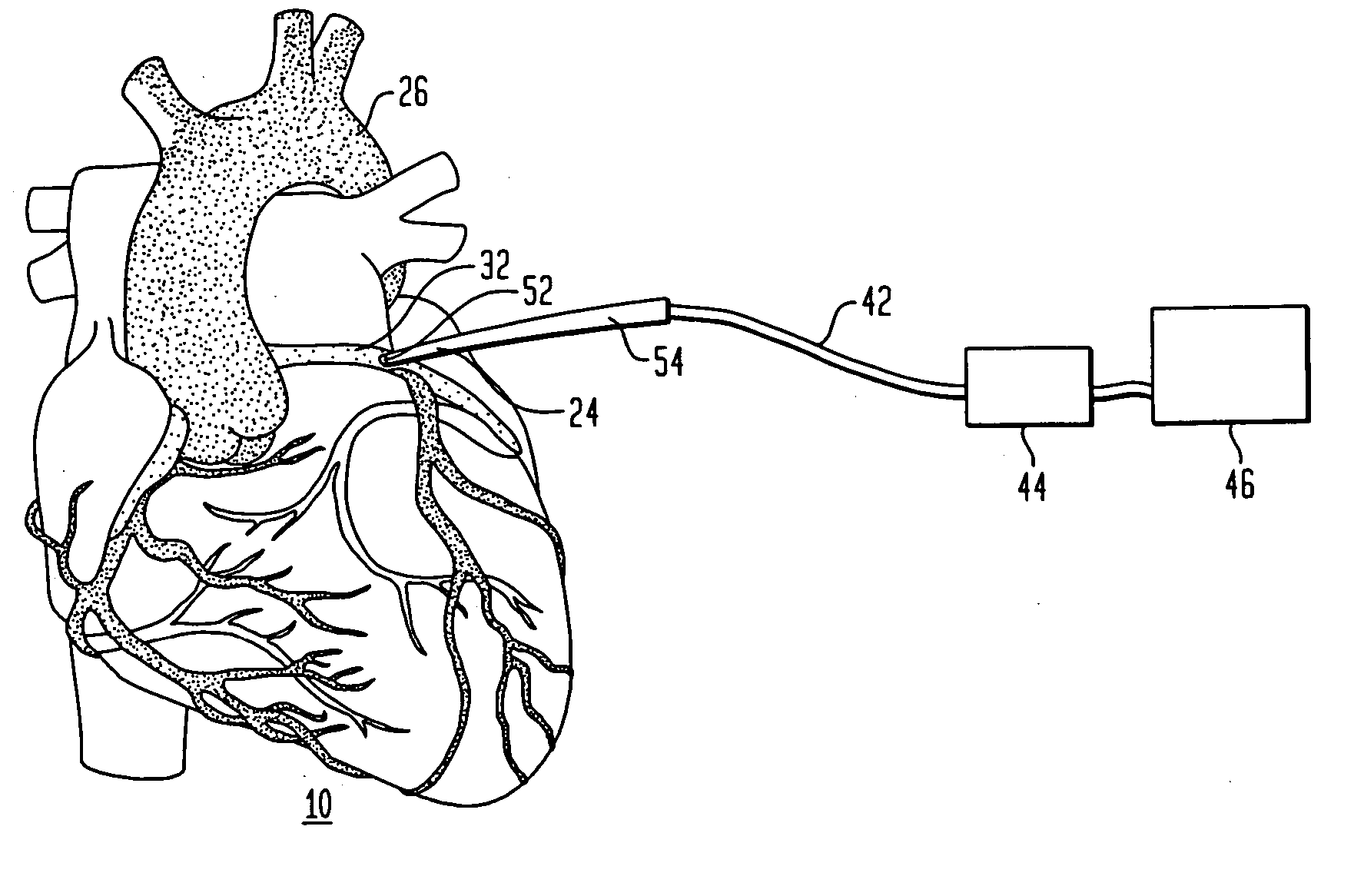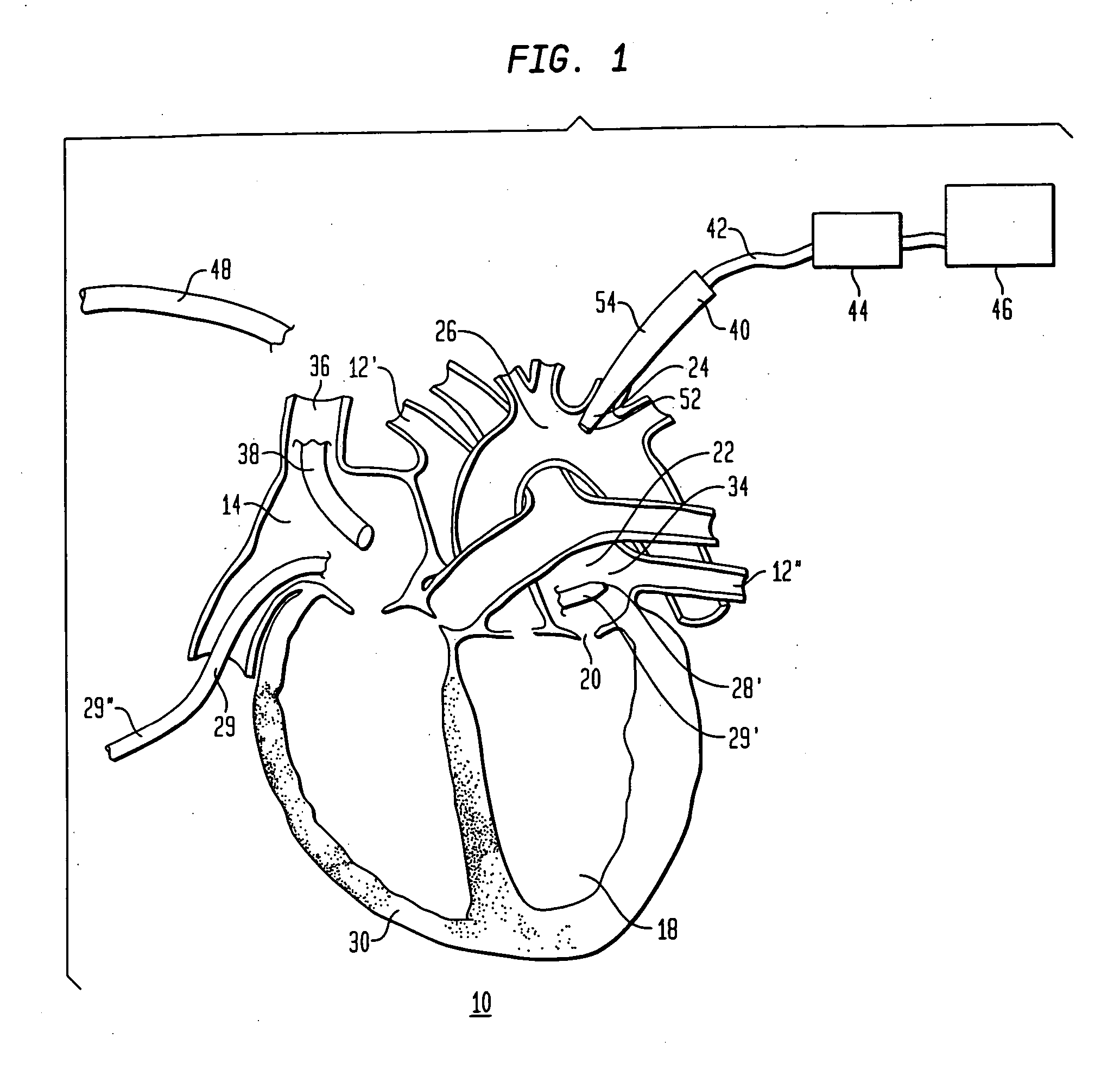Cardiac ablation using microbubbles
a technology of microbubbles and ablation chambers, which is applied in the field of medical procedures and devices for cardiac ablation, can solve problems such as potentially life-threatening conditions, and achieve the effects of reducing the dilution of microbubbles, and increasing the rate of ultrasonic absorption in myocardial tissues
- Summary
- Abstract
- Description
- Claims
- Application Information
AI Technical Summary
Benefits of technology
Problems solved by technology
Method used
Image
Examples
Embodiment Construction
[0022]FIG. 1 shows a method for performing cardiac ablation in accordance with one embodiment of the present invention. The method includes the use of an ultrasonic ablation device 28. Device 28 preferably is a device according to the aforementioned co-pending, commonly assigned U.S. patent application Ser. Nos. 09 / 905,227, 09 / 904,963 and 09 / 904,620, and includes an ultrasonic emitter together with a reflector or lens for focusing the energy emitted from the emitter onto a region of tissue to be ablated. Device 28 desirably is mounted on the distal end 29′ of catheter referred to herein as the device catheter. The proximal end 29″ of the device catheter is connected to a source of excitation energy (not shown) from the ultrasonic device. The apparatus further includes a microbubble catheter 54, and an intracardiac or ultrasound imaging device 48. The distal end of the ultrasonic ablation device 28′ is moved into the heart 10 by a physician. The physician then moves the distal end 29...
PUM
 Login to View More
Login to View More Abstract
Description
Claims
Application Information
 Login to View More
Login to View More - R&D
- Intellectual Property
- Life Sciences
- Materials
- Tech Scout
- Unparalleled Data Quality
- Higher Quality Content
- 60% Fewer Hallucinations
Browse by: Latest US Patents, China's latest patents, Technical Efficacy Thesaurus, Application Domain, Technology Topic, Popular Technical Reports.
© 2025 PatSnap. All rights reserved.Legal|Privacy policy|Modern Slavery Act Transparency Statement|Sitemap|About US| Contact US: help@patsnap.com



